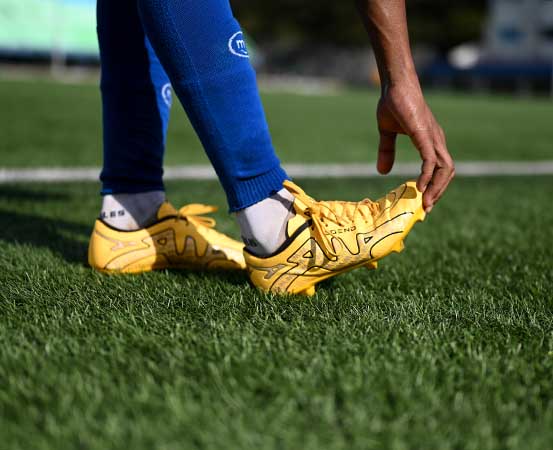
Artificial turfs are a godsend, especially in places where weather and natural resources for natural grass to flourish are unavailable. It is a substitute that provides a hazard-free surface for people and children to play sports – be it football, hockey, rugby, or any sport for that matter. The debate as to which is better – artificial or natural grass – is a lopsided one with the man-made surface losing out easily. However, the practicality, convenience and feasibility have seen artificial turf playgrounds mushrooming of late.
What is artificial turf?
Artificial turf is laid as a substitute for natural grass in indoor sports courts/stadiums and at places where the conditions are not favourable to grow grass. Artificial turf has a base layer made up of polyester tyre cords. Polypropylene or nylon is used for grass blades and rubber crumbs or silicon sand for infills. The exact composition varies depending on the quality of the turf.
Artificial turf has its takers despite the inherent challenges of playing on it.
“Given a choice, I would choose to play on a turf,” says Siddhanth Aney, a journalist and recreational footballer based in New Delhi, India. “But most athletes would prefer a natural surface, primarily because of the feel that you get from playing on real grass. It’s very different from playing on an artificial surface and also because the turf temperature is much higher.”
Injuries while playing on turf
In sports, injuries are common, but it is believed that on artificial turf, the risk of injuries is high. The review article, Lower Extremity Injury Rates on Artificial Turf and Natural Grass Playing Surfaces, by Gould HP, Lostetter SJ, Samuelson ER, and Guyton GP, suggests that the rate of overall injury and knee injury are more or less similar on artificial turf and natural grass, but artificial turfs may be associated with a higher rate of foot and ankle injuries.
Injuries to the lower extremities – the foot, ankle, knees, and hips – are common while playing on artificial turf. Concussions, abrasions, and heat-related issues like dehydration and heat strokes, turf toe and turf burn also occur.
“When you do any suddenly accelerated push-off movement on the turf while running or playing any other game, an injury on the big toe joint occurs causing turf toe,” says Dr Sidharth Unnithan, a sports medicine specialist based in Kerala. “It can be from a small joint stretch to a ligament tear. When you slide on the turf, the skin is rubbed against the rough surface and abrasion occurs on your skin which is called turf burn.”
Natural grass is less abrasive and the temperature on the surface is lower because of the presence of water in the soil. The artificial turf is made up of synthetic material that absorbs and retains a lot of heat which increases the temperature.
“When you play especially in the afternoons there is a high chance for dehydration or heat strokes and thermal burns to occur,” adds Dr Unnithan. “In the latest generation of artificial turf, it is comparatively less, but it is always better to drink more water, while you play on artificial turf.”
How to avoid turf injuries
A well-maintained turf can help minimize injuries, say experts.
“Injuries depend on the maintenance of turf,” says Siddharth Changalath, architect and managing director at Garron Play Arena, Kerala. “A properly maintained artificial turf will cause fewer injuries than a turf that is not. While playing on turfs the players must wear turf boots [specific for the surface] to reduce injuries like ligament tears. If you play with normal boots, it might affect the ligaments within six months to a year.”
Warming up before playing is essential, but more while playing on turf.
“Usually, most people who train on artificial turf, do not do warm up and start playing matches directly because of limited time,” says Dr Unnithan. “So proper adequate warm-up by doing dynamic stretches, playing the game and then doing static stretches will prevent a lot of injuries. Focusing on a few strengthening exercises so that your muscle can take the impact which occurs on artificial turf is also helpful.”
Artificial turfs are here to stay though as getting a natural surface to play will become increasingly difficult given the state in which the cities are developing and the load it adds on natural resources like water. The tech needs to catch up too, says Aney, adding, “Looking at how technological developments can make artificial surfaces more player friendly, safe, and comfortable would be ideal at this point”.
Takeaways
- Artificial turf, made up of synthetic material, is a substitute for natural grass in indoor sports courts/stadiums and at places where weather conditions and natural resources make it difficult for growing and maintaining natural grass.
- Lower extremity injuries like foot injury, ankle injury, knee injury, and hip injuries are common on artificial turf along with concussions, abrasions, and heat-related issues like dehydration, heat strokes, turf toe and turf burns.
- A well-maintained turf should minimize the hazards while playing on them. Wearing turf boots minimizes the chances of injuries too.















